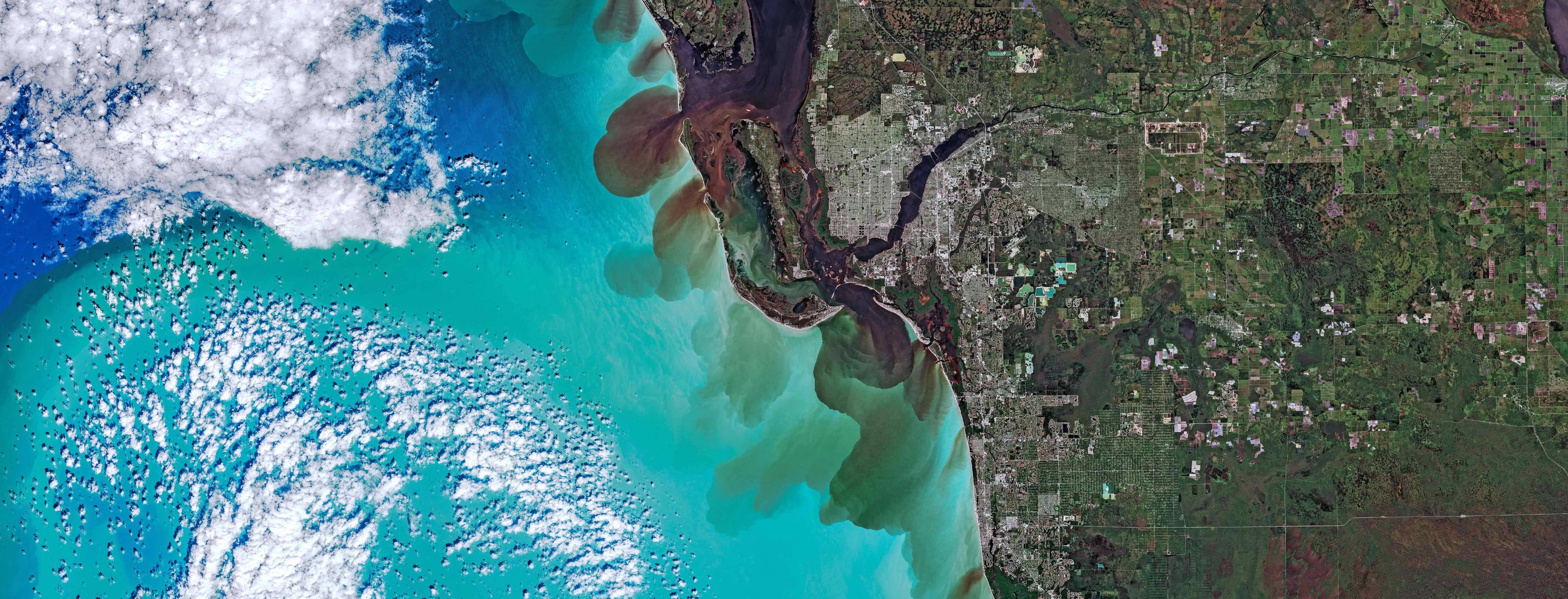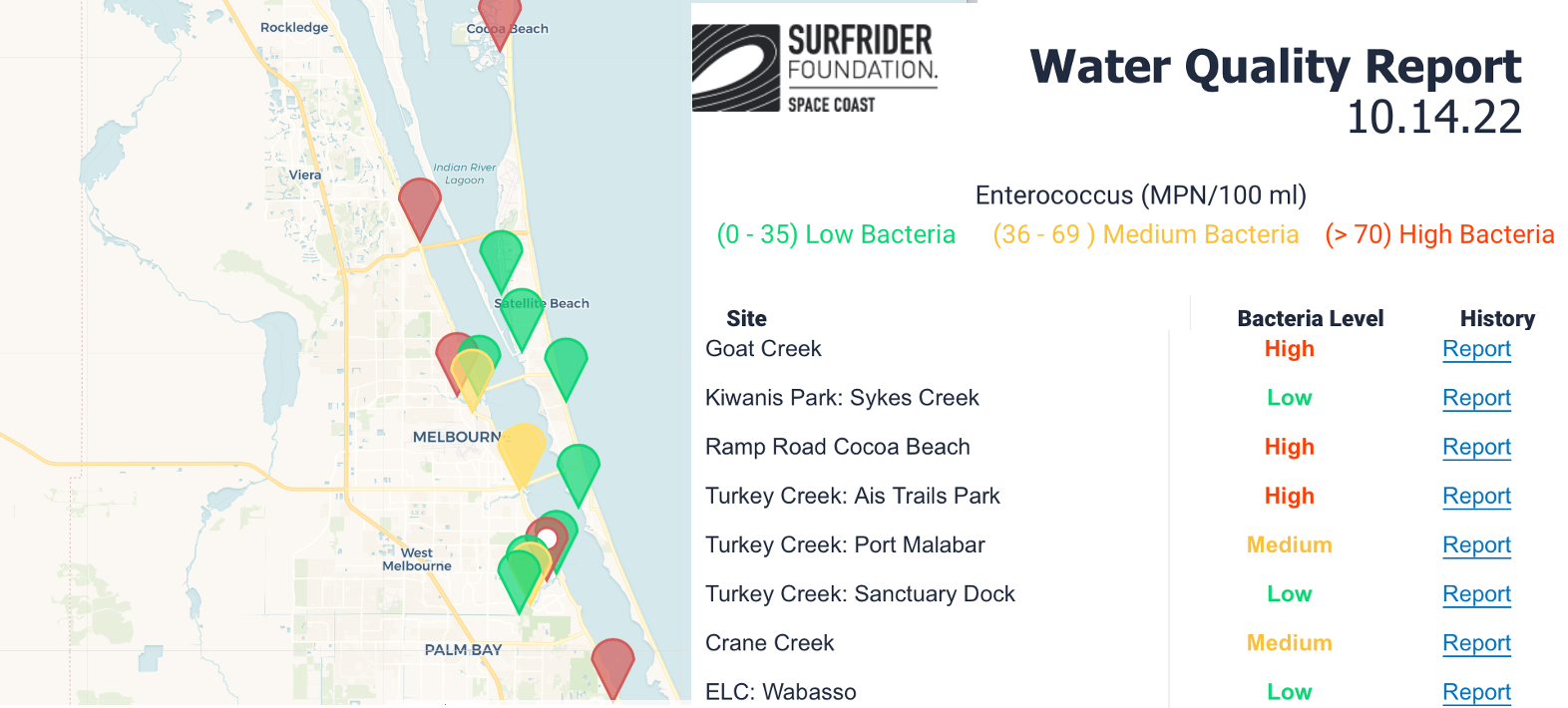
10.17.22
A Supercharged Atlantic Hurricane Season: How Stronger, Wetter Storms Exacerbate Florida's Sewage Pollution Crisis
By Emma HaydocyHurricane Ian ravaged the southwest coast of Florida when it made landfall on September 28th as a Category 4 storm before barreling across the state and impacting Florida communities from Fort Myers to St. Augustine. While the hurricane force winds have long since subsided, Floridians from coast to coast continue to experience the lingering impacts of sewage spills. While this problem is not new to the Sunshine State, climate change, sea level rise, and stronger, wetter hurricanes are testing the limits of Florida’s failing wastewater infrastructure.
Harrowing images have emerged depicting the devastating destruction of southwest Florida’s built communities, but zone out from the destruction on the ground and a different picture emerges. Untold gallons of poorly treated sewage have flowed through coastal communities and into Florida’s already fragile waterways and ocean, illustrating the severity of the sewage pollution crisis in the state. Sewage pollution on this scale is a grave threat to the public health of residents in impacted areas, where there have been 65 documented cases of flesh-eating bacteria resulting in 11 deaths since the storm. The below video illustrates how sewers can easily overflow, discharging untreated sewage into local waterways when heavy rain and flooding occurs.
While the southwest corner of the Florida peninsula was hardest hit, the heavy rains brought by Ian caused water infrastructure failures throughout the state, including 7.2 million gallons of sewage that spilled into the Indian River Lagoon from a local plant. Water quality in this important estuary system has long suffered from elevated levels of nitrogen from septic systems, leaking sewers, and urban and agricultural runoff in its watershed. The recent sewage spills not only put public health at risk but also contribute more nitrogen pollution that has been causing widespread ecosystem impacts within the estuary such as Harmful Algal Blooms, seagrass die-offs, and declining numbers of manatees and other marine species that depend on the Indian River Lagoon for habitat.
Through their Ocean Friendly Gardens program Surfrider’s Space Coast Chapter has been implementing solutions for stormwater and urban runoff. They continue to monitor water quality conditions within the Lagoon and in many of its tributaries through their Blue Water Task Force (BWTF) program. The Chapter’s test results demonstrate telltale signs of chronic pollution with high fecal bacteria levels measured at sampling sites located in many of the creeks that flow into the Lagoon. These creeks not only affect water quality downstream, but they are also popular recreational waterways used by the community for paddling, swimming and other aquatic activities popular with local families.

Above: A sub-set of water quality data reported by the Space Coast Blue Water Task Force on 10/14/2022. For full results visit bwtf.surfrider.org.
With eight BWTF labs operating throughout the state, Surfrider chapters are helping to provide critical water quality information to their communities so people know where it’s safe to recreate in the water. This is particularly important in coastal communities and beaches where millions of tourists flock to visit and recreate every year. We also build on the efforts of our grassroots BWTF program by advocating at the state and federal level for more funding to support robust, agency-run, beach monitoring programs. Given the water quality emergency precipitated by Hurricane Ian, funding the Florida Healthy Beaches Program will be more important than ever in the 2023 state legislative session. This program has long been under-funded, resulting in fewer beaches being sampled and shorter sampling seasons over the last decade. Surfrider is also working to improve public notification practices to ensure that all beachgoers are equipped with the knowledge to safely recreate along Florida’s coasts.
Climate change only exacerbates the water quality issues that have plagued Florida for decades, and Surfrider continues to work on the federal level advocating for long term clean water and climate solutions. Surfrider fights for federal BEACH Act funds to ensure rigorous beach water quality monitoring and public notification nationwide, and Clean Water State Revolving Funds used by states to improve wastewater infrastructure and prevent sewage spills, both of which are critical to protecting clean water in Florida.
As Florida recovers from Hurricane Ian, Surfrider will continue to work to improve coastal water quality, protect public health, and address the root causes of pollution in the state’s waterways. Our thoughts continue to be with Florida’s coastal and inland communities impacted by the storm.
Click through to learn more about the sewage spills caused by Hurricane Ian below:
Cover photo credit: Copernicus Sentinel/Sentinel Hub/Pierre Markuse
This blog post is the second in a series documenting the devastating impacts of the 2022 hurricane season on Florida’s built and natural communities. Keep reading to learn more about Part 1. Nature-based solutions and climate adaptations, Part 3. Beach erosion caused by Hurricane Nicole, Part 4. Red tide event + Hurricane Ian
